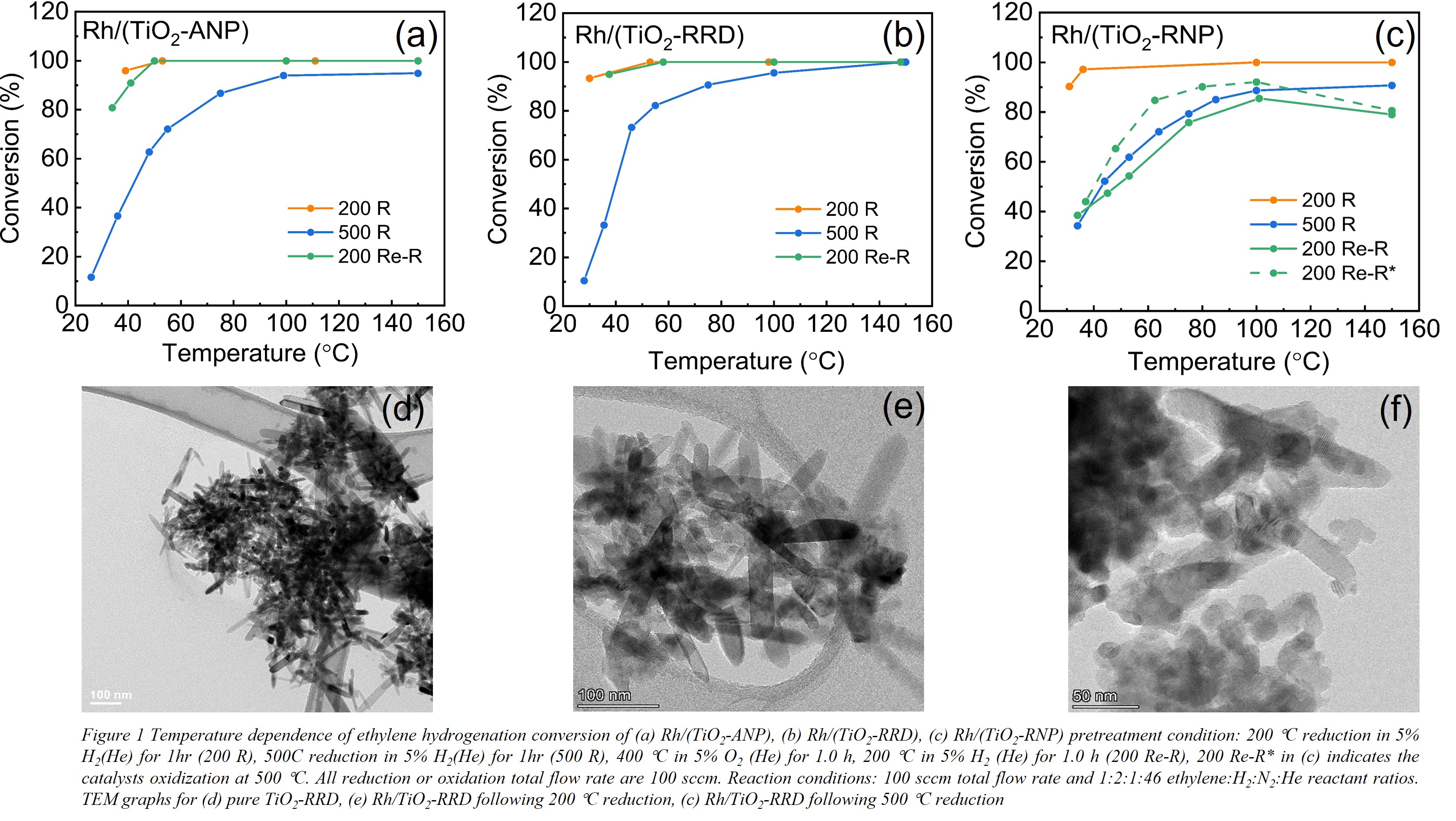2022 Annual Meeting
(532bi) Insights into the Influence of Crystal Structure on Strong Metal-Support Interactions over Rh/TiO2 Catalysts – Applications in Parahydrogen-Induced Polarization NMR
Authors
Song, B., University of Florida
Choi, D., University of Florida
Hagelin Weaver, H., University of Florida
Bowers, C. R., University of Florida
Strong metal-support interactions (SMSIs) have been demonstrated to enhance the pairwise selectivity of hydrogen addition to unsaturated hydrocarbons, such as propene, a requirement for signal enhancement using parahydrogen-induced polarization (PHIP) nuclear magnetic resonance (NMR). In this study, Rh catalysts with 0.5% loading by weight were synthesized using incipient wetness impregnation and three different TiO2 structures, namely TiO2 nanoparticles with a pure anatase phase (TiO2-ANP), rutile nanoparticles (TiO2-RNP), as well as rutile nanorods (TiO2-RRD), to determine the effect of crystal structure on SMSIs. Using ethylene hydrogenation as a probe reaction, typical SMSIs were observed on the Rh/TiO2-RRD and Rh/TiO2-ANP. After reduction in 5% H2 at 200 °C, all catalysts exhibit high activity near room temperature. As expected, reduction at 500 °C (5% H2) resulted in significantly lower ethylene hydrogenation activity over all catalysts. Reoxidation of the catalysts followed by another reduction at 200 °C recovered the low-temperature activity for the Rh/TiO2-RRD and Rh/TiO2-ANP catalysts, but not for the Rh/TiO2-RNP catalyst. This is unexpected, as both the TiO2-RRD and TiO2-RNP have the same rutile phase, while the TiO2-ANP have a different structure (anatase). CO chemisorption measurements are consistent with the reaction data and reveal that the lower hydrogenation activity after reduction at 500 °C is due to a decrease in Rh metal surface area, and this loss in surface area is not recoverable for the TiO2-RNP catalyst. Transmission electron microscopy (TEM) data indicate that the TiO2 rods are not stable under these conditions, which may explain why reversible TiOx migration over the Rh particles is easier on the TiO2 rods compared with the more stable rutile TiO2 nanoparticles (which could be why the rods behave like the less stable anatase nanoparticles). Our preliminary PHIP NMR data show that the pairwise selectivity can be improved via induction of strong metal support interactions.


